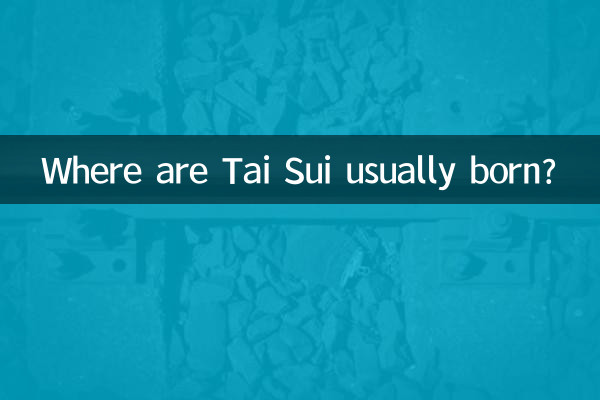Where are Tai Sui usually born?
Tai Sui, also known as Ganoderma lucidum, is a mysterious fungal complex that is often regarded as the "elixir of immortality" among the people. In recent years, the discovery and research of Tai Sui has attracted widespread attention. This article will combine the hot topics and hot content on the Internet in the past 10 days to explore the growth environment, distribution characteristics and related scientific explanations of Tai Sui.
1. The growth environment of Tai Sui

Tai Sui mostly grows in specific natural environments. Here are some common growing locations:
| growing place | Environmental characteristics | frequency of discovery |
|---|---|---|
| Deep mountains and old forests | High humidity and rich humus | higher |
| deep underground | Hypoxia, avoidance of light | medium |
| lake or swamp | The water is clear and rich in minerals | lower |
| near ancient tombs | Closed environment, no one interferes for a long time | rare |
2. Distribution characteristics of Tai Sui
According to recent hot reports and scientific research, the distribution of Tai Sui has certain regional characteristics:
| area | Found quantity | Typical discovery locations |
|---|---|---|
| Northeast China | More | Changbai Mountain, Daxinganling |
| Southwest China | medium | Yunnan and Sichuan mountainous areas |
| North China | less | Ancient tombs in Shanxi and Hebei |
| Other areas | sporadic | Russia, Japan, etc. |
3. Scientific explanation of Tai Sui
Although Tai Sui is deified by the people, there has been some research on it in the scientific community. The following are recent hot research results:
1.microbial complex: Tai Sui is mainly composed of slime mold, bacteria and fungi, which is a complex microbial symbiont.
2.growth conditions: Tai Sui requires specific temperature (10-25℃), humidity (above 70%) and nutritional environment (rich in organic matter).
3.Medicinal value controversy: Some studies show that Tai Sui may contain antibacterial ingredients, but its "immortality" effect lacks scientific basis.
4. Recent hot events
1.Tai Sui discovery in Yunnan in 2023: A farmer dug up a 20-kilogram Tai Sui deep in the mountains, which attracted the attention of the collecting community.
2.New research in science: A laboratory published a paper revealing that there may be new antibiotic substances in Tai Sui.
3.Auction market boom: A Tai Sui piece said to be thousands of years old was sold at a high price of 1.2 million yuan, sparking controversy over its authenticity.
5. How to identify true and false Tai Sui
As the popularity of Tai Sui increases, many counterfeit products appear on the market. The following are identification methods recently provided by experts:
| feature | So old | Fake Tai Sui |
|---|---|---|
| texture | Good elasticity and not fragile | Hard and brittle or too soft |
| odor | Slight earthy smell | Chemical taste or tasteless |
| grow | Slow, observable growth | No change |
| Water immersion test | Water does not change color | Discolored or cloudy water |
6. Conservation and Sustainability
Due to the rarity and ecological value of Tai Sui, environmentalists have recently called for:
1. Establish Taisui Resource Protection Area to prevent over-exploitation.
2. Strengthen scientific research and avoid blind hype leading to ecological damage.
3. Develop artificial cultivation technology to reduce dependence on natural resources.
Conclusion
The mystery of Tai Sui is being gradually revealed by science. From growth environment to distribution characteristics, from scientific value to market phenomenon, this ancient life form continues to arouse people's enthusiasm for exploration. A correct understanding of Tai Sui can not only protect this unique natural resource, but also avoid being misled by false rumors.

check the details

check the details